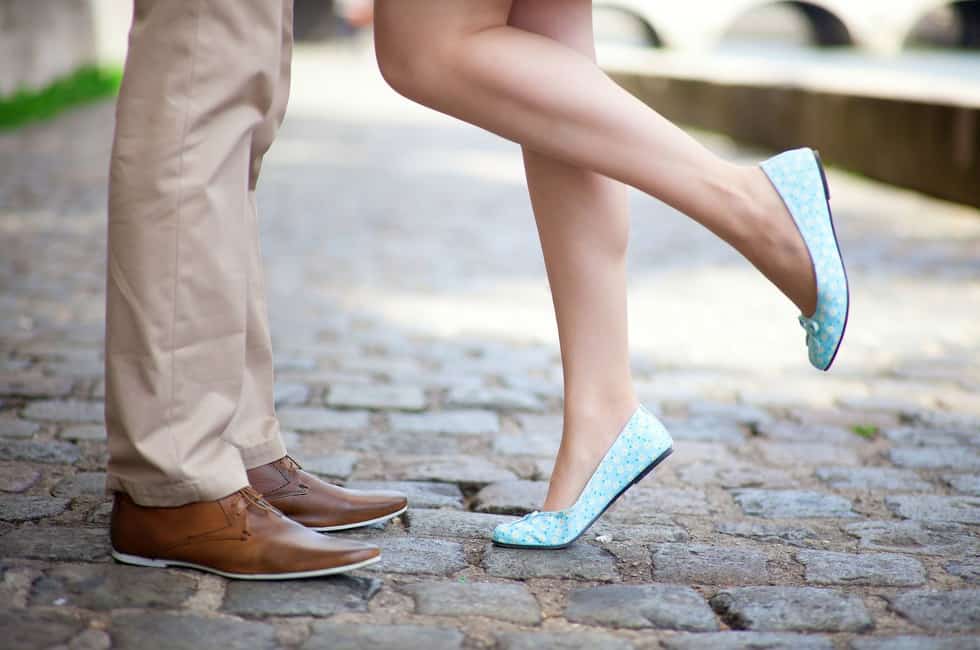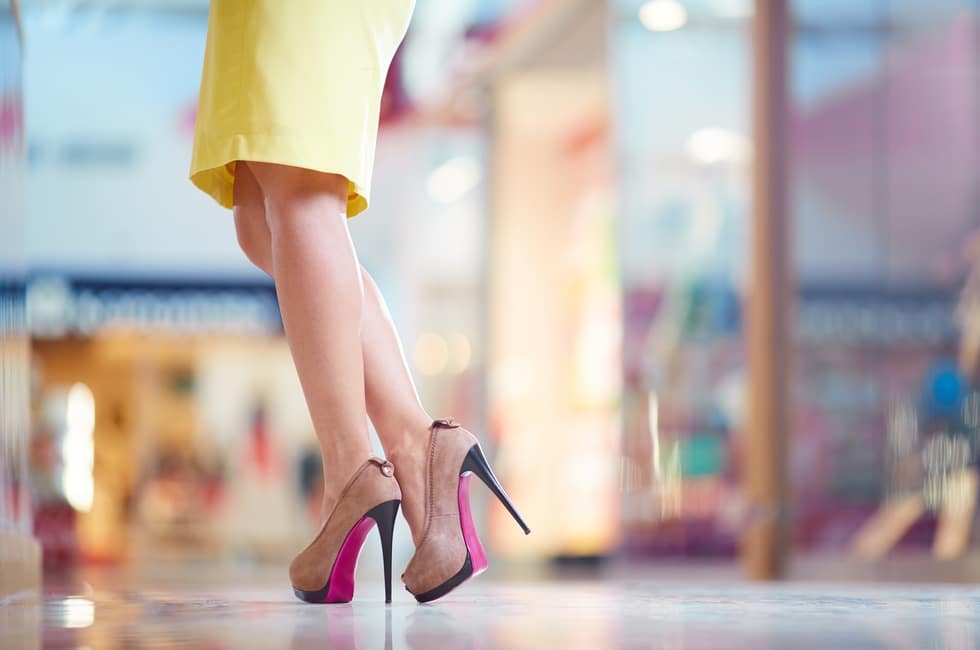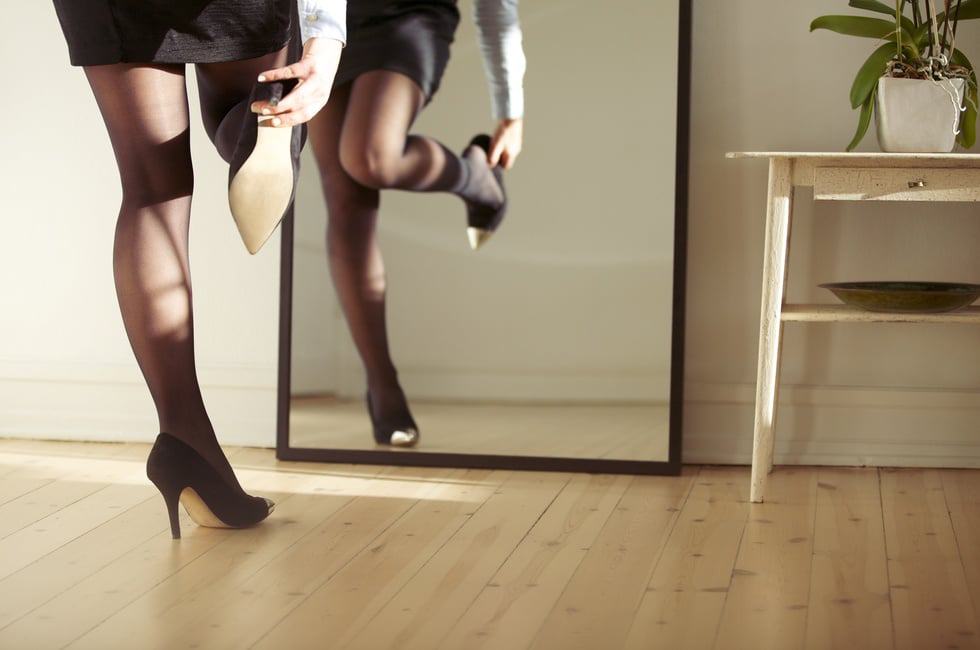Depending on the material, sole, and type of shoes, there are a number of ways on how to make your shoes slip resistant. These methods are quite easy to do and in most cases it takes less than a day to complete.
Doing this, you get to save money, time, and effort without having to go to a cobbler or replacing your shoes. Here are some of the methods you can employ to make your shoe slip-resistant
How to Make shoes non slip diy
If you buy a pair of high heels and they don’t have any rubber for traction on the bottom or you buy a pair of hard leather-soled shoes and there is no traction on there because there is no rubber and it is smooth. There is actually a way that you can make this stick so that way you are not sliding all over the place.
Duct Tape
All you have to do is to take a duct tape and just put it on the bottom of your shoe and what this is going to do is once you start walking around on gravel or anything like that the gravel is going to roughen the sole of the shoe up and so it is going to make your foot stick to the ground a little bit better.
Also, some little tiny rocks might stick to it and that is going to give you better traction as well so you are not slipping and sliding all over. Again, you can take something like silicone caulk for tiles or weatherproofing windows and stuff like that and you can get it in like a squeeze tube as well.
You can get this from any hardware store and you can actually just add some of that on the bottom of your shoe and then let it dry for whatever the directions say to let it dry. The silicone caulk gives the same effect as the duct tape but it looks a little bit better than the duct tape does.
Hair Spray
Need a quick home remedy to make your shoes less slippery? Apply hair spray to the bottom of your shoe; hairspray helps to create a bond with the traction and soles when walking on different surfaces. There is a need to spray this periodically as it tends to wear off with every use.
Non-Slip Soles
Non-slip sole is another great way to make your shoe slip-resistant. All you have to do is to simply attach these non-slip soles to the sole of your shoes. They are long-lasting and provide safety from skidding. Apart from this, they also help to keep the soles of your shoes from quickly wearing out. These non-slip shoes are relatively cheap too as they cost less than $7.
Spray on Coating
You can also try spray-on coating known as traction or grip sprays. Spray on coating cost around $10 but always look out for quality and affordable products to ensure you get the best results. This product helps to add better grip on the sole of your shoes.
Scuff the Soles of the Shoes
A new pair of shoes are known to have slippery soles as it has not made any contact with the floor just yet; in order to make them slip resistant it is time to allow your new shoes and the ground meet.
You can do this by scuffing the soles of your shoes to the ground such as gravel or concrete by dragging your feet around while wearing the shoes or get down and use your hands to scuff the soles. It will certainly take some time for your shoes to start being slip resistant but with time and a lot of walking you would start to get results.
If you have no access to any hard ground yet or want to do it at home you can make your shoes non-slip by scuffing it with sandpaper. Simply rub your shoes with the sandpaper for a few minutes it is best to use a 50-grit sandpaper the more coarse the better.
You can still use fine sandpaper though it will take a longer time for it to produce results. You can also use a nail file if you don’t have sandpaper too. Other products such as grip pads also work to add grip to your shoes, especially older pairs.
Stick Two Bandages
If you are always slipping and falling anytime you wear a pair of shoes, sticking two adhesive bandages to the heel of your shoes will help you to have an enhanced grip.
This option offers a quick fix to make your shoes slip resistant on occasions when you are running short of time and these pairs of shoes are the most suitable for that occasion.
Masking Tape
When under the rain or when on the wet ground using masking tape will work as well but you will need to replace the tape regularly as it loses its adhesiveness. Masking tape is good for increased traction and it is quite easy to use. Apply it to the sole of your shoe by laying a few rolls of the masking tape to form an x-pattern
Crisscross Over the Sole of the Shoes
Another way to make your shoes slip resistant is to crisscross over the sole of your shoes with scissors. You do not need to go overboard whilst doing this by going too deep, a few abrasions on the sole of your shoes will do; doing this will help add traction to your shoes.
Use Salt and Rubber Glue Mixture
Coat the bottom of your shoes with a mixture of salt and rubber glue. You can simply mix the salt and glue in a bowl and use a brush to apply it to the sole of your shoe, and then allow it to dry.
This mixture is perfect for adding traction to the sole of the shoe, so you are safe from slipping when walking. The mixture of salt and rubber glue is a great option on how to make your shoes non-slip DIY.
Ankle Strap a Pair of High-Heeled Sandals
Fixing an ankle strap on your high-heeled sandals can help to give you a better balance and grip thereby reducing your chances of falling.
How to Make Slippers Slip Resistant
These non-slip soles will work on any knitted slippers; for best results invest in a new tube of shoe goo. We are going to need a finished slipper of course, a tube of shoe goo, and some disposable gloves. Shoe goo is a glue and it is made really for repairing athletic shoes and I normally locate it in the shoe department not in the glue or craft department.
Make Non-Slip Soles For Safer Slippers
So it is not hard to find if you know where to look but it’s not usually with blues and caulking it is usually with shoes and accessories. Flatten out the bottom of the shoe as much as is reasonably possible, get into your glue and begin spreading the glue.
It comes out very thick that is why you are going to need a glove because what we want is not just on the surface, we need this worked down. Do the areas where your foot tends to hit the floor first and most generously, so work from the toe to the ball of the foot.
The heel is the next place to work on because the heel is a hard hitting area as well if you would rather run short in the arch of the foot where you don’t tend to rely on traction very much because a slipper may be hitting the floor but that is not where your weight hits, this is thick gooey glue and that is why it works so well.
You do not want the glue just sitting on the surface because it will just peel off after a few steps. When it dries, a nonstick and non-skid slipper is created.
Add Puffy Paint to Slipper Socks
To start with you will need to shake the tube of your puffy paint, if you don’t shake the tube the paint won’t get mixed up and it won’t go on the slipper right.
So gently squeeze the bottle and what you want to do is make sure your dots are kind of flattened so when you are placing them on the slipper just kind of press them down; you can also make bigger dots if you would like. You can use a q-tip to press it down and just kind of go around the edges.
If you don’t have another slipper that is okay just place it how you want on the bottom of the sock and again the purpose of this is to avoid slipping on. If you say you have hardwood floors or a slippery surface without carpet this is just an idea to make your slippers less slippery.
Your dots don’t have to be perfect, you can do it big, small, or however you want. You can take a q-tip if you want and place the ball to make a little dot, so just continue doing that where you want and after that let it dry.
I recommend leaving them dry overnight. When the puffy paint is dry, you would notice that it is not rubbing off and it creates a rough surface.
Attach Some Shelf Liners
Shelf liners can be sewn on the sole of slippers and they help to give a perfect gripping. They are made for lining kitchen shelves and so they are very comfortable because they are a bit soft. Add these shelf liners to your slippers by cutting out two ovals from the shelf liners; one for the foot and the other for the heel.
Use a leather punch to create holes around those pieces of shelf liners and then attach them to the sole of the slippers and sew them with a yarn and a needle. The shelf liners add extra comfort to the slippers especially the thin ones and can be easily removed.
Plasti Dip
Plasti dip is a special type of air-dry rubber compound that is made majorly to coat objects so they are slip resistant. This non-slip solution also works well on crotchet slippers as well. Simply apply 3 coats of plasti dip and allow it to dry properly. This gives you the perfect amount of grip you desire with your slipper. It is easy to apply and remains flexible after drying.
Cut Out Pieces of Suede
- For this, you will need a sheet of suede, a leather hole punch, and a darning needle. Just like we did with the shelf liner, you can also cut out two pieces from the suede; one for the heel and the other for the foot.
- After this, punch holes around the pieces, pin them in place and sew them with a yarn and a needle. Suede is a very durable option to make slippers non-slip and it provides some level of cushioning at the bottom.
- For workers in the restaurant industry, shoes that are not slip resistant are very dangerous as these workers have to constantly walk through the kitchen and if care is not taken it is very easy for them to lose their balance.
- This is why most restaurants require that their staffs put on slip resistant shoes at all times. Workers who are low on cash can take advantage of the aforementioned tips to help them add more traction to their shoes.
- In recent times, workers in other industries who are at the risk of slipping due to the nature of their job and texture of the floor are also encouraged to wear non-slip shoes in order to reduce the risk of slipping whilst working.
The safest thing to do is to buy a slip resistant shoe but as a quick fix, you can employ the following above mentioned hacks. Hopefully, this tutorial on making shoes not slip will help you be able to make your shoes more useful.



